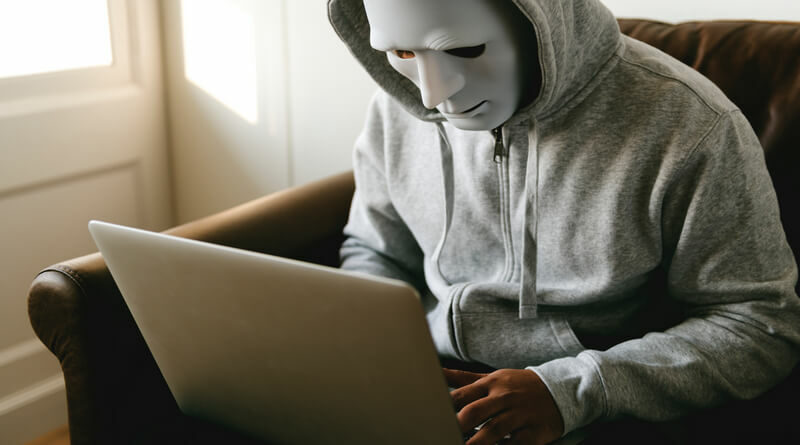How Biometrics Can Counter Identity Theft
May I know your password?
No one in today’s world is fool enough to disclose their passwords that easily. Still, cybercriminals have successfully gathered numerous account details and used them to enter your social media account forcefully.
Ordinary people know this method as identity theft. A cybercriminal either uses your account or creates a fake one similar to yours and uses it for notorious purposes. For instance, they can use it to ask for money from your friends, publish sensitive material under your name to harm your reputation, and much more.
Identity theft is a common problem many victims have faced in their lifetime. Biometrics is a step forward to tackle this threat.
However, how secure biometric authentication is still questionable.
Therefore, I created this guide to answer the reliability of biometric authentication to save yourself from identity theft. Further, we will also discuss the necessary measures to make sure no one can steal your identity.
So, if you are ready to open your eyes, let’s begin.
What is Identity Theft?
Identity theft is when someone uses your credentials to steal your identity. Cybercriminals can sniff into the trash bins to find your bank statement, or they can hack your computer to gain control over your account. In any case, the victim is commonly targeted for financial fraud, bad credit, or unauthorized transactions.
A personal motive usually steers identity theft in the case of social media accounts. Let’s say a bully is disturbing some nerd on the playground. So the nerd decides to take revenge by uploading shameful posts from the bully’s account.
Identity theft is a serious crime, no matter what is the motive behind it.
How Biometrics Comes to Rescue?
One common thing behind all identity theft scams is the exposure of credentials and passwords.
No cybercriminals can steal your identity unless he has your account password. There are several ways to gather that information. For instance, insider news, hacking, sending malware to your device, and much more.
Even if you haven’t told your password to anyone or it is not saved on your device, a hacker can sniff it out using security questions. Answers to your security questions are readily available on your social media accounts.
What these cybercriminals can not steal (easily) is your biometric information. Let’s see what personal data comes under the biometric section.
Fingerprints
Humans have shifted from using their thumbprints to sign a document to create a unique signature. However, thumbprints or fingerprints are finding their way back into the world through digital mediums.
It is a well-known fact that every person on this planet shares a different fingerprint, even twins. Therefore, they become a reliable way to mark unique identities.
Facial Recognition
Facial recognition deals with collecting your facial structure for identification. It is the weakest section of all biometric authentication methods, which led to a series of iterations.
Initially, facial recognition was so dim that you could have fooled it using a picture. Later, developers introduced eye movements to make it robust.
The facial recognition technology currently on the market uses an infrared grid to determine your facial structure. Thus, making the technology more robust and reliable.
Voice Recognition
A voice recognition model registers your speech frequency and pattern to authenticate your identity. You might have seen it in movies where a person unlocks a door by using voice commands.
A hacker would need your voice samples, your exact password, and a mind-blowing skill to mimic your voice to use it against you. Thus, making it much more secure than a traditional password.
Retina/Iris Scan
Firstly, keep in mind that both the Retina scan and Iris scan are different things. However, since they both deal with your eyes, let us club them for understanding’s sake.
Similar to fingerprints, every person’s retinal and iris pattern is unique. In general, eye scanning technology registers your eye pattern and uses it to verify your identity.
Two significant facts govern the robustness and reliability of this method.
- No two people share the same eye patterns.
- An amputated eye decomposes quickly and won’t come in any use to criminals.
How Biometrics Can Protect you from Identity Theft
Now that we understand what different biometric identification processes are let’s see how they can protect us from identity theft.
You Become the Password
First and foremost comes the fact that you become the password while using biometric technology. Unlike security questions to use two-factor authentication, you become the password.
The traditional ways of two-factor authentication either use your phone for OTP or use security questions to confirm your identity. Both of which are easier to crack.
Once you have entered your biometric details into a system, it becomes nearly impossible for hackers to access your account or device.
Ever-evolving Technology
Biometric authentication has recently found its way into daily use. We can not imagine using our fingerprint to open a phone in the last decade.
Even being new, biometric technology has shown promise to protect individual data significantly. This technology has evolved enormously in a few years. We can expect it to reach new highs in the future as well.
Since developers are trying hard to make biometric authentication more robust each passing day, you can think of using them everywhere, from grocery transactions to cross-country verification, in the coming years.
Extra Measures to Protect your Identity
We are hoping for a bright future where identity theft becomes minimal to no threat for ordinary people. Still, biometric authentication has not yet captured every field, device, and area. Therefore, there is a better scope for it in the future.
Meanwhile, it also raises the vulnerabilities this technology has to deal with currently. Developers work days and nights to make it more secure for us. What we can do is take the best precautions to protect ourselves.
Here are some actionable tips you can apply quickly to feel safer with your identity.
- Update all your programs to the latest versions. Hackers usually benefit from security holes to breach your device. By keeping your software up to date, you make sure of installing a security patch to eliminate previously existing vulnerabilities.
- Change your passwords frequently. You will come across this advice every time you read about cybersecurity. Changing your passwords in a timely fashion helps you keep your data safe. Hackers won’t take much effort to crack the same account password again and again.
- Use a password manager. If you find it difficult to remember passwords, I suggest using a password manager. A good password manager would only require a master password to control all other passwords. You can even keep your fingerprint as the master password for many devices.
- Never reveal answers to security questions publicly. Your security questions are usually the only barrier for a hacker to enter your system. Avoid filling online forms for gifts or revealing such information to unknown people.
Conclusion
Although biometric authentication is relatively new in the market, it has proved to be a significant step in personal identification and data protection.
We can also expect it to become more robust, complementing blockchain technology. It is reliable for securing your device and personal information still I suggest taking extra measures to keep yourself safe. Cybercriminals are also evolving, and they already have tools to break previous biometric technologies. It is just a matter of time for cybercriminals to find a way to bypass your biometrics.
Therefore, the best way to keep your account safe is by using all possible security measures.











